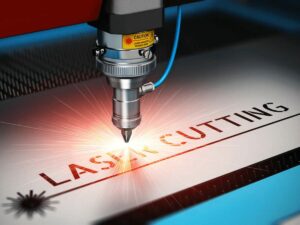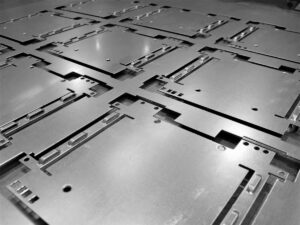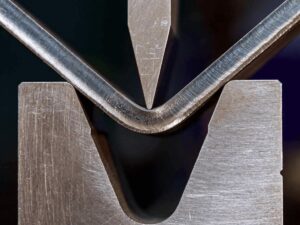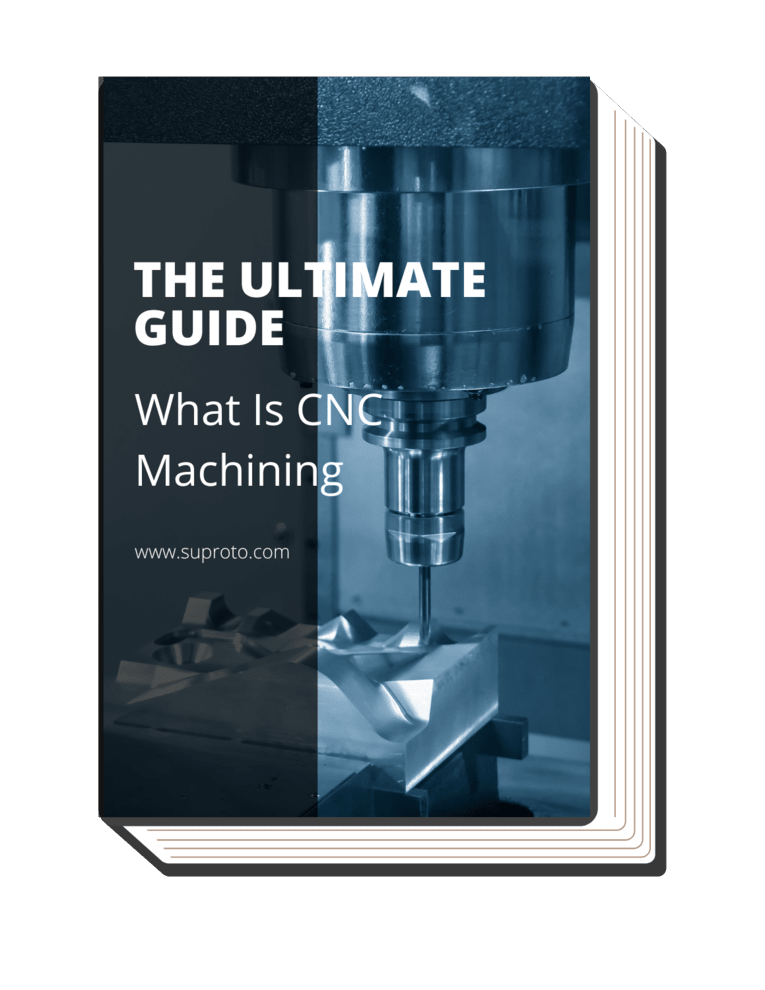1. Understanding Sheet Metal Fabrication
Sheet metal fabrication is like alchemy for modern times; it turns flat metal sheets into intricate metal products and structures. It involves transforming a variety of metals – Aluminum, Steel, Stainless Steel, Copper, and Brass – into parts and components through an artful combination of techniques. Cutting, bending, punching, stamping, welding, and finishing are the magical spells cast in this process.
2. The Growing Importance of China in Sheet Metal Fabrication
China, often referred to as the world’s factory, is a titan in the realm of sheet metal fabrication. With state-of-the-art facilities that boast advanced technologies, Chinese companies like Suproto are ensuring precision and efficiency in producing sheet metal components. I was awestruck by their commitment to innovation as they evolved into smart factories that leverage real-time data from quote to shipment.
3. Benefits of Choosing China for Sheet Metal Fabrication
When it comes to sheet metal fabrication, China has positioned itself as a powerhouse. Let’s explore the myriad of benefits that make China a go-to destination for sheet metal fabrication.
Cost-Effectiveness
First and foremost, the undeniable allure of cost-effectiveness. China has mastered the art of producing high-quality sheet metal components without burning a hole in the pocket. This is due to a combination of factors such as lower labor costs, an abundance of raw materials, and efficient manufacturing processes.
Manufacturing Expertise
Additionally, the manufacturing expertise in China is unparalleled. With decades of experience, I really believe Chinese fabricators have become adept at understanding specific client needs and delivering customized solutions that are as scrumptious as Peking Duck. The focus is not only on production but also on expert project management and consultation.
Advanced Equipment
Here’s where it gets exciting: the state-of-the-art facilities. Chinese manufacturers consistently invest in the latest technology, ensuring precision and efficiency in producing sheet metal components. This includes everything from advanced laser cutting machines to CNC machining centers. It’s like having a supercar at the price of a bicycle!
Scalability and Capacity
Furthermore, Chinese manufacturers offer incredible scalability and capacity. Whether the need is a small batch of specialized components or massive quantities for large-scale production, my conviction tells me they are reliable. This, coupled with their ability to manage projects efficiently, makes China an enticing option for businesses worldwide.
4. Common Sheet Metal Fabrication Techniques in China
Now, let’s delve into the various sheet metal fabrication techniques that are commonly used in China. Here are some to explore:
Laser Cutting
Slipping into the technical zone, laser cutting is like Bruce Lee of sheet metal fabrication – precise, efficient, and powerful. With high-powered lasers, this technique ensures accuracy and is a popular choice for intricate designs that need to be cut from metal sheets.
CNC Machining
Next up, is CNC Machining, the ancient Chinese secret for modern manufacturing. This process involves computer-controlled machines that can perform a wide range of functions like milling, turning, and drilling with utmost precision. It’s like having a skilled Shaolin monk doing metalwork!
Punching and Shearing
Punching and shearing, the powerful tag team! This duo is used to create holes and cutouts in sheet metal. It’s akin to making beautiful paper-cut art but with metal. I can vouch for the strength and speed in this process can make anyone’s jaw drop!
Forming and Bending
Through processes like press braking, metal sheets are gracefully bent and shaped into desired forms. I have seen modern technologies like ultrasonic metal forming enhance performance by applying ultrasonic vibrations, leading to increased production speeds, reduced tool wear, lower forming forces, and an improved surface finish.
Welding and Assembly
Finally, welding and assembly. This is where all the pieces come together, literally. With the precision of a tea ceremony, parts are joined using high temperatures to form the final product. It is essential to note that metal forming is normally performed after primary processes such as extraction and casting, and before the finishing processes, which include metal cutting, grinding, polishing, painting, and assembly.
5. The Process of Sheet Metal Fabrication
Sheet metal fabrication is an intricate process that transforms flat sheets of metal into finished products or parts. Let’s dive into the step-by-step process of sheet metal fabrication:
Step#1 Design and Engineering
Design and engineering are the building blocks of the sheet metal fabrication process. It begins with an idea, which is then translated into a 3D model detailing specifications such as wall thickness, bend radii, hole orientation, and more. Engineers develop blueprints based on this model, which contain all the necessary manufacturing information, including material selection and surface finishing.
Step#2 Material Selection
Material selection is a critical aspect of sheet metal fabrication. Depending on the application, opt for various materials like aluminum, steel, or copper. Suproto, a renowned manufacturer, once stated that considering factors like tensile strength, corrosion resistance, and weight can be pivotal in choosing the right material.
Step#3 Cutting
Once the design is finalized and the material is chosen, the cutting process begins. There are numerous cutting methods available, such as laser cutting and mechanical cutting. Laser cutting is known for its precision and is ideal for thinner materials, whereas mechanical cutting, which includes shearing or die cutting, is more cost-effective for simple cuts without the need for complex shapes.
Step#4 Bending
Next, is the realm of bending. I believe this is where flat sheets of metal start to take shape. Press brakes are usually employed to fold sheet metal parts. However, bending is arguably one of the most challenging steps due to the complexity of some bends, necessitating engineers to be adept at understanding the limitations of metal bending.
Step#5 Welding and Assembly
Welding and assembly are crucial for joining cut and bent pieces together to form the final product. I have learned that before welding, the parts must be clean. If welding is involved, powder coating often follows it. Ensuring quality welding is essential in manufacturing, as it not only protects the reputation of a company but also saves time and money, reduces risks, and ensures product longevity
Step#6 Finishing
In the finishing process, the electrostatic powder is applied to a charged metal component to enhance the product’s aesthetics and increases its resistance to corrosion. The quality of welding before this step is vital as it ensures the product’s durability and structural integrity, which in turn ensures that the finishing process results in a high-quality, long-lasting final product.
6. Understanding Pricing and Cost Factors
When venturing into sheet metal fabrication, understanding the cost factors is crucial for budgeting and efficient production. Let’s explore the major components affecting pricing:
Material Costs
One of the primary cost factors in sheet metal fabrication is the material itself. The choice of material can significantly influence the total costs, as different materials come at varying prices. For instance, stainless steel might be more expensive compared to aluminum due to its superior properties.
The table below provides insights into the considerations and factors related to material costs in sheet metal fabrication. Explore the impact of material selection, price variations, waste and yield, availability and sourcing, and material properties on managing material expenses. Discover how making informed choices about materials can optimize costs in sheet metal fabrication projects.
| Material Costs Considerations |
Description |
| Material Selection |
The choice of material for sheet metal fabrication is a critical factor in determining overall costs. Different materials, such as stainless steel, aluminum, or carbon steel, have varying price points. The selection of the material depends on factors like desired properties, project requirements, functional needs, and budget constraints. Assessing the suitability of different materials and their associated costs is crucial in managing material expenses effectively. |
| Material Price Variations |
Materials used in sheet metal fabrication often have different price variations based on factors such as availability, market demand, processing complexity, and production volume. For example, stainless steel might be more expensive compared to aluminum due to its superior properties and manufacturing challenges. Considering the price variations and fluctuations in material costs is essential for estimating and managing the overall project budget. |
| Material Waste and Yield |
Material waste and yield can significantly impact material costs in sheet metal fabrication. Certain fabrication processes, such as laser cutting or waterjet cutting, generate more waste compared to other methods. Optimizing the layout and nesting of parts on the sheet metal can help minimize material waste and maximize yield, thereby reducing material expenses. Efficient material usage and waste reduction strategies contribute to cost savings in the long run. |
| Material Availability and Sourcing |
The availability and sourcing of materials can influence their costs. Materials that are readily available in the market and sourced locally tend to have lower transportation costs and shorter lead times, which can positively impact the overall material expenses. On the other hand, rare or specialty materials may have limited availability, requiring additional efforts and costs for sourcing, handling, and transportation. Assessing the availability and sourcing options for different materials is important in managing material costs effectively. |
| Material Properties and Requirements |
The properties and functional requirements of the fabricated parts play a role in material costs. Certain projects may require materials with specific properties like high strength, corrosion resistance, or heat resistance, which can impact the material costs. Balancing the desired material properties with project requirements and cost considerations is essential for optimizing material expenses. |
Labor Costs
Labor costs encompass the expenses associated with the manpower required for the fabrication process. I can tell this includes the wages of the engineers, machine operators, and other staff involved. The complexity and duration of the project also play a role in determining labor costs.
Design Complexity
According to Jacek Marczyk, complexity means functionality. In my experience, the complexity of the design is directly proportional to the cost. Intricate designs require more precision and possibly specialized machinery, which can drive up the costs.
7. 4 Factors to Consider When Selecting a Sheet Metal Fabrication Partner
As per Maximize Market Research, the sheet metal fabrication services market size was valued at USD 16.93 Bn. in 2021 and the total Sheet Metal Fabrication Services revenue is expected to grow at 3.8% from 2022 to 2029, reaching nearly USD 22.82 Bn. Selecting a partner is a critical step that can affect the quality and efficiency of the final product. Let’s explore four essential factors:
#1 Experience and Reputation
First and foremost, it’s vital to evaluate the experience and reputation of a potential fabrication partner. A company that has been in the business for an extended period is likely to have honed its skills and processes. It is essential to look into the company’s track record, customer reviews, and examples of past work to gauge its reliability and expertise. A company like Suproto has garnered a solid reputation over the years.
#2 Expertise in Specific Industries
Moving forward, it’s imperative to ensure that the fabrication service has expertise in the specific industry for which require their services. Different industries have distinct requirements and standards; therefore, a partner with relevant experience and knowledge can be invaluable. For me, they should have a good understanding of the materials and fabrication processes suitable for products in the industry.
#3 Quality Control Systems
Another significant factor is the company’s quality control systems. Precision is key in metal fabrication, and the partner to choose should have stringent quality control measures in place to ensure that the final product meets the desired specifications and standards. For instance, investigate whether the company adheres to industry-standard certifications and what processes they have in place for quality assurance.
#4 Communication and Language
Trust me, effective communication is crucial. The company must be able to understand requirements precisely and be transparent about the capabilities, limitations, and costs involved. Language barriers or poor communication channels can lead to misunderstandings and ultimately, an unsatisfactory final product. Choose a partner with whom can establish clear communication, and who can provide timely updates and feedback.
Conclusion
As the manufacturing industry continually evolves, sheet metal fabrication remains a linchpin in China. With its applications spanning from automotive to aerospace and medical devices, this technique’s versatility and efficiency are unparalleled. Are you pondering how to make the most of sheet metal fabrication for your business?
Reach out to our experts for in-depth insights and advice to tailored needs. Our team is dedicated to helping and harnessing the potential of sheet metal fabrication in China. Let’s collaborate to bring every business vision to reality! Contact us today for any queries or assistance.





